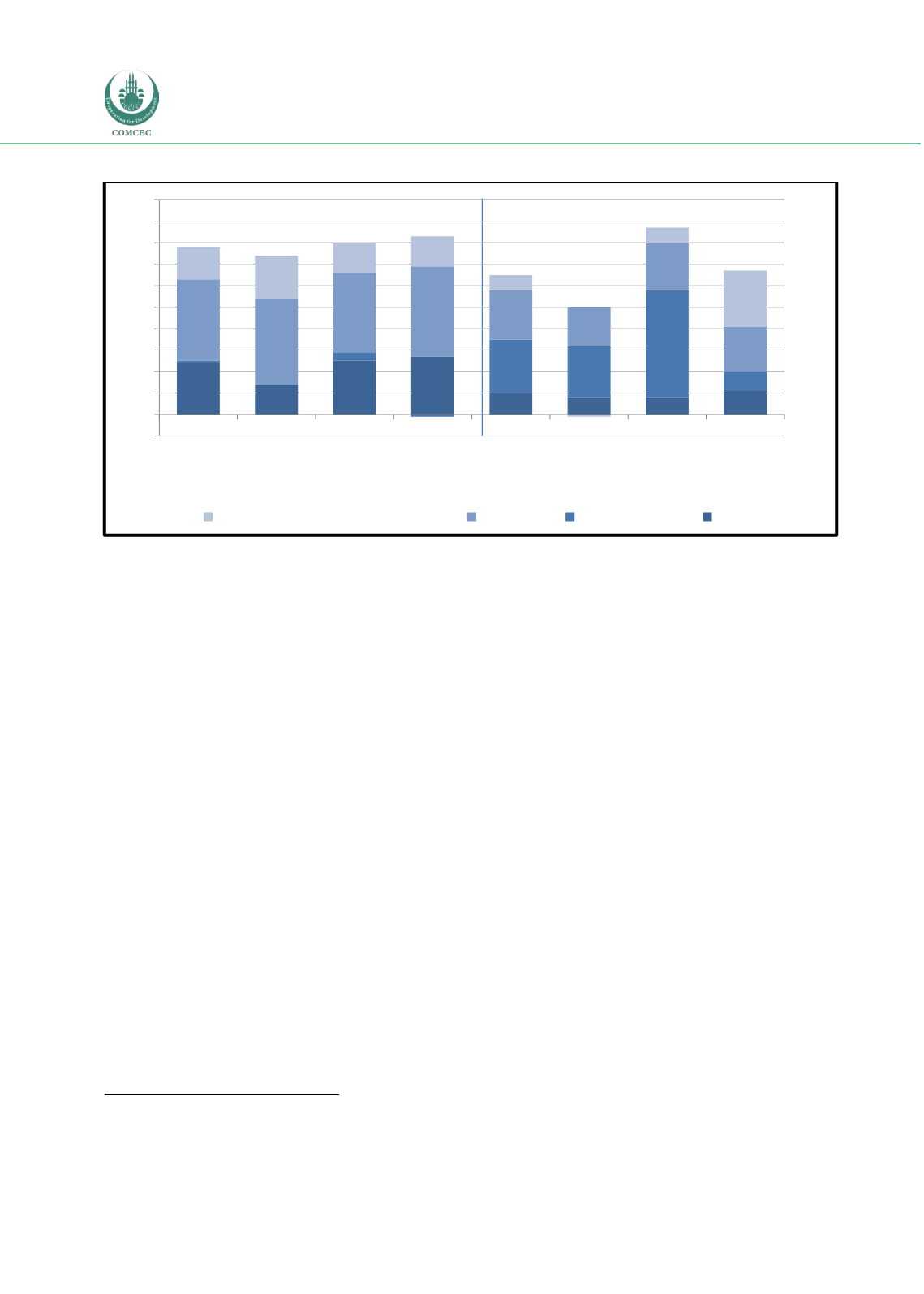

Increasing Agricultural Productivity:
Encouraging Foreign Direct Investments in the COMCEC Region
76
Figure 34: Sectoral Contribution to Growth for Selected Countries
Source:
World Bank (2013a)
107
The agricultural sector has performed strongly over most of this period, but there is still
substantial scope to sustainably improve productivity, production and market linkages.
108
Although Government has demonstrated its commitment to agricultural development by
allocating some 15 percent of its budget to the sector, “The sector remains dominated by a
subsistence, low input-low output rain-fed farming system in which droughts periodically
reverse performance gains with devastating effects on household food security and poverty
levels.”
The Policy Framework for Agricultural FDI
“Agricultural Development Led Industrialization” (ADLI) is a linchpin of the government’s
overall development strategy, which aims for Ethiopia to achieve middle-income status by 2020.
To accomplish this, the Government has budgeted some USD16.6 billion over the 2010-2020
period, of which 60 per cent is expected to come from Government resources and 40 per cent
from donors. In addition to these resources, foreign direct investment is expected to contribute
substantially, especially in raising domestic value added through agro-processing, increased
production yields, and better post-harvest handling, storage, and logistics. Recognizing the
importance of FDI, the Agricultural Sector Policy and Investment Framework recognizes that “In
order to attract private investment in the sector, including foreign investment, the Government
will need to maintain a transparent system of agribusiness investment guidelines and
incentives; and to accelerate implementation of the policy framework for agricultural
commercialisation. The latter includes instruments such as warehouse receipts, other financial
services (banking, insurance, foreign exchange, futures etc), the Ethiopian Commodities
Exchange (ECX), contract farming etc. There is also a need to delineate the role of commercial
107
World Bank (2013a),
Africa’s Pulse,
Volume 7, April 2013
108
Ethiopian Ministry of Agriculture (2010), “Agricultural Sector Policy and Investment Framework 2010-2020”
2,4
1,4
2,5
2,7
1
0,8
0,8
1,1
0,1
0
0,4
2,5
2,4
5
0,9
3,8
4
3,7
4,2
2,3
1,8
2,2
2,1
1,5
2
1,4
1,4
0,7
0,7
2,6
-1
0
1
2
3
4
5
6
7
8
9
10
1995 - 2010 1995 - 2000 2001 - 2007 2008 - 2010 1995 - 2010 1995 - 2000 2001 - 2007 2008 - 2010
Growth in %
Resource Poor
Resource Rich
(Ethiopia, Mozambique, Rwanda)
(Angola, Nigeria, Zambia)
Manufactuing & Other Industries
Services
Resource rent
Agriculture

















